If you’re wondering how much it costs to straight-pipe a car, you’re not alone. Many people are curious about this process and what it entails. This blog post will discuss the cost of straight piping a car and what factors influence that price. It will also provide some tips on how to keep the cost as low as possible. So, if you’re ready to learn more, keep reading!
The Cost to Straight Pipe a Car: Professional vs. DIY
When it comes to straight piping a car, there are two main options: professional installation or do-it-yourself (DIY). Each route has its pros and cons, so it’s important to weigh up the costs – both financial and time investment – before making your decision.
Professional Installation
The cost of hiring a professional to straight pipe your car will vary depending on the make and model of the vehicle, but generally speaking, you can expect to pay anywhere from $500-$2,000. This includes the cost of labor plus any required parts or materials needed for the job.
The benefit of going this route is that you can be certain the job will be done correctly and safely. This means you won’t have to worry about voiding any warranties or running into problems down the line.
DIY
If you decide to take on the DIY route, then you can expect to spend significantly less – anywhere from $50-$500 depending on what parts and materials are needed for your particular project. However, it’s important to keep in mind that straight piping a car isn’t a simple job; depending on your level of experience, it could take anywhere from several hours up to a full day (or longer) to complete the job properly. Additionally, if something goes wrong during installation, you may end up having to hire a professional anyway, which could potentially lead to extra costs.
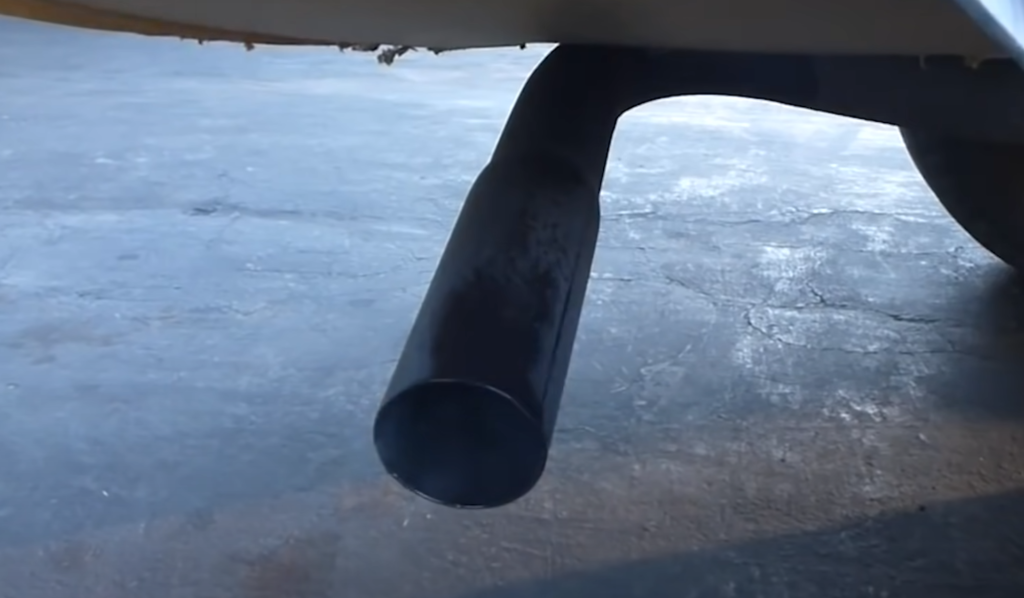
Ultimately, the decision of whether you should use a professional or attempt DIY will depend on your budget and level of expertise. If you’re confident in your abilities and have some spare time on your hands, then doing it yourself can save you quite a bit of money. However, if you want peace of mind that the job will be done correctly and safely, hiring a professional is probably the better option [1].
What Affects the Cost of Straight Pipe a Car?
Your Vehicle
The type of vehicle you are straight piping will have a direct impact on the cost. Generally, larger cars with more complex exhaust systems will be more expensive to pipe due to the amount of labor and materials it requires to complete the job correctly. For instance, an aftermarket exhaust system for a Ford Mustang may cost significantly less than one for a Hummer or other large SUV/truck.
Your Location
Another factor that can affect the cost of straight pipes is where you live. Different areas have different regulations regarding noise levels, so some parts might need to be custom-made if they don’t meet local standards. Additionally, prices in certain regions could be higher due to supply and demand or because of taxes and fees associated with exhaust installation. For example, California has strict emissions standards that must be met, which makes exhaust piping more expensive.
Your Mechanic
The experience and skill of your mechanic is also a major factor when it comes to the cost of straight pipes. If you choose an inexperienced or low-quality mechanic, they may make mistakes while installing the system that could lead to costly repairs down the line. It’s always best to find someone who is certified and has plenty of experience with aftermarket exhaust systems. Additionally, some mechanics offer packages that include installation as well as parts, which can save you money in the long run.
Parts Needed
The type and number of parts needed to straight-pipe a car will also affect the cost. Different cars require different parts, so make sure you research exactly what is needed for your vehicle before getting started. Additionally, you may find that some aftermarket parts are significantly cheaper than OEM replacements.
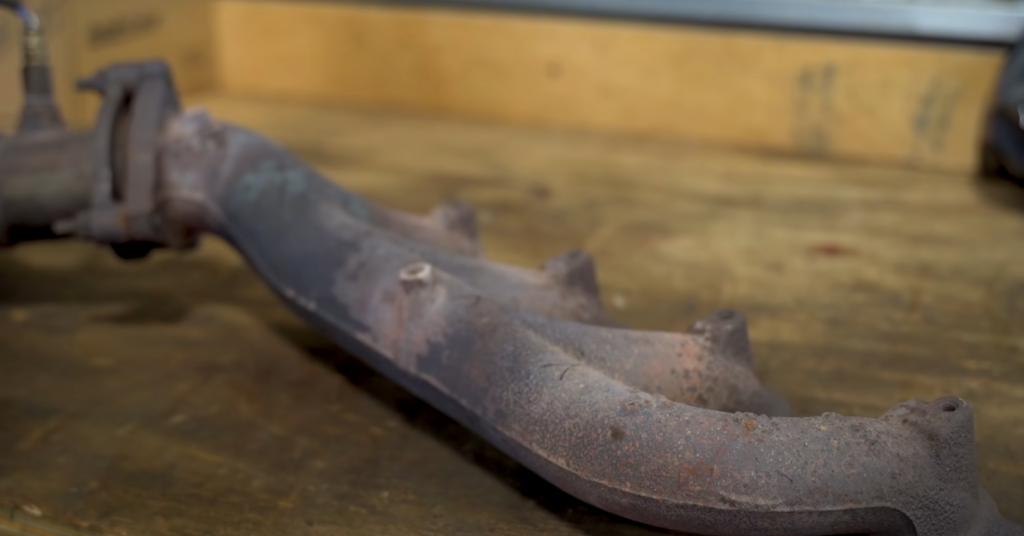
Labor Costs
Labor costs can add significantly to the price of straight piping a car.
Alternatively, if you want a professional mechanic or shop to do the job, expect to pay more for them to dedicate their time and expertise to the job.
Other Factors
Finally, other variables can affect the cost of straight pipe installation such as the type (stainless steel vs. aluminized steel) and quality of the parts used as well as any special tools needed to get the job done correctly. All these things should be considered when trying to determine the cost of straight pipes for your vehicle.
Overall, the cost of straight-piping a car can vary greatly depending on your vehicle, parts needed, location, and labor costs. Make sure you do your research beforehand to get an idea of what the total price might be and then compare prices from different vendors/mechanics before making a decision. Doing so will help you find the best option for your budget [2].
Pros of Straight Piping a Car
Sound (Opinion)
Straight pipes are ideal for those who love the loud, aggressive sound of a powerful engine. The open pipe allows for more air to flow through the exhaust, creating a throaty roar that can be heard from blocks away. This is especially true when paired with an aftermarket muffler such as a performance-oriented “straight-through” design which further increases the sound level.
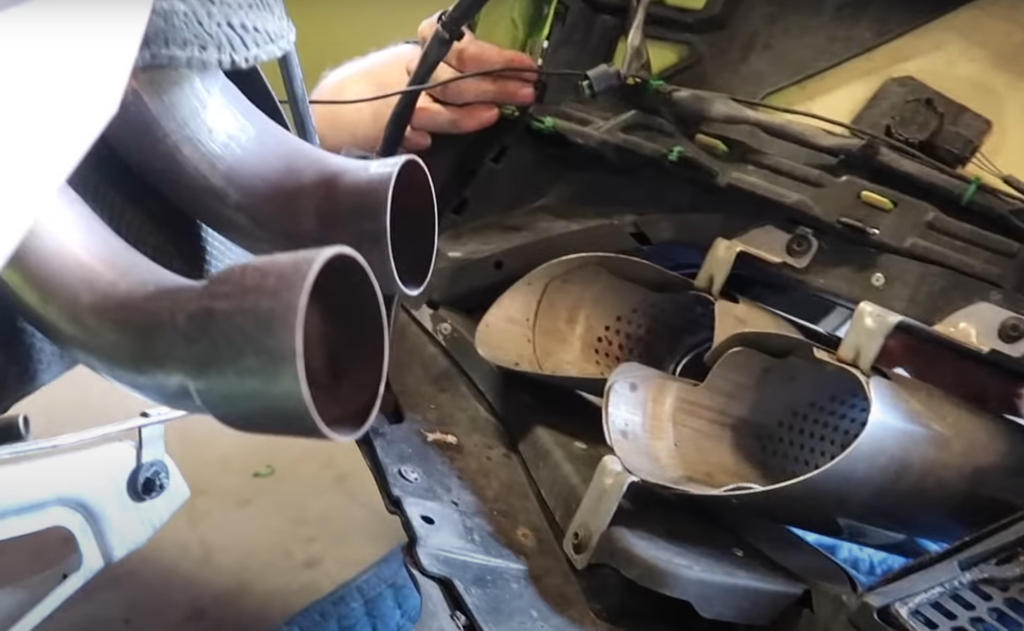
Power and Performance (Fact)
Straight piping also helps increase the power output of your car’s engine by providing more efficient exhaust flow from the cylinders. A straight pipe eliminates restrictions caused by catalytic converters, resonators, and other components in factory exhaust systems. Additionally, it reduces back pressure in the exhaust system which allows for increased exhaust flow and improved cylinder scavenging. This can lead to an increase in engine power output, sometimes as much as 10%.
Aesthetics (Opinion)
For car enthusiasts, the look of a straight pipe is also quite appealing. The exposed pipes create an aggressive, intimidating look that goes well with the sound it produces. A straight pipe can enhance the exterior of any performance vehicle and give it a more powerful image. Moreover, it adds an interesting visual detail to the vehicle which can draw attention from other enthusiasts.
Weight Reduction (Fact)
In addition to the performance and aesthetic benefits, straight piping can also be a great way to reduce the weight of your vehicle. An aftermarket exhaust system made up of just pipes and mufflers will usually weigh much less than a factory exhaust setup with all its additional components such as catalytic converters, resonators, etc. This reduced weight can help improve acceleration time and the overall handling characteristics of your car.
Cost Savings (Fact)
Finally, one of the biggest advantages of installing a straight pipe is cost savings. Due to their minimal design and lack of components, they are much cheaper than traditional exhaust systems. So if you’re looking for an affordable way to increase your car’s power and sound without breaking the bank, then a straight pipe might be just what you need!
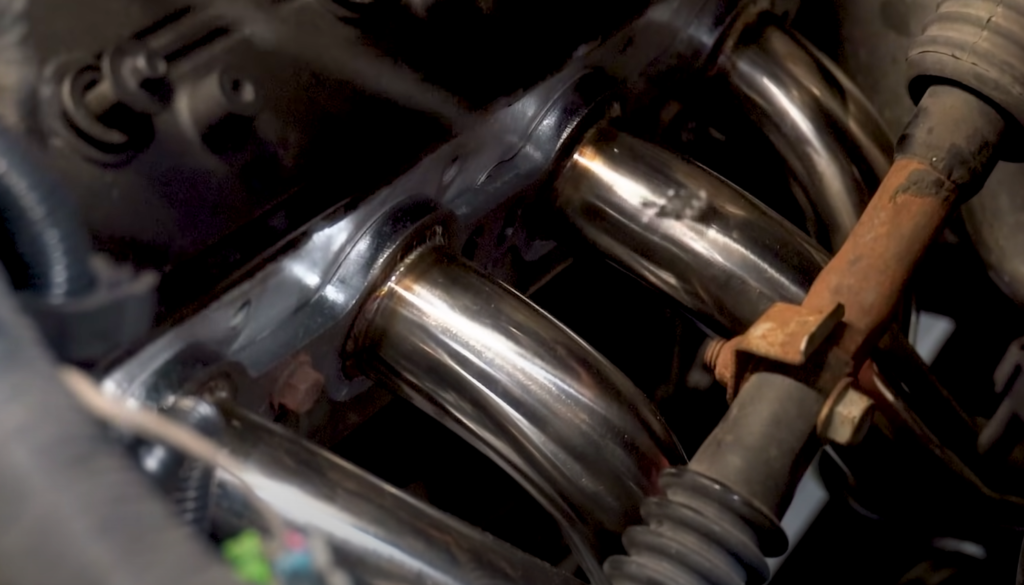
Cons of Straight Piping a Car
Investment
Straight-piping a car is an expensive investment. Even if you are using aftermarket parts, the cost of having a mechanic install the pipes and exhaust system can be high. Additionally, straight piping requires maintenance and more frequent replacement than stock systems due to wear and tear from the increased power output that comes with it.
Noise Pollution
One of the most obvious downsides to straight piping your car is the noise pollution it creates.
Efficiency Losses
The increased power output associated with straight-piped cars comes at a cost in terms of efficiency. This means that while you may get more power out of your car, you may also be losing fuel efficiency. In some cases, this can lead to higher operational costs for the vehicle.
Increased Wear and Tear
Straight-piped cars also experience increased wear and tear due to the increased power output. This means that parts like brakes, tires and other components may need to be replaced more often than with a stock system. Additionally, there may be additional stress on the engine which could lead to premature failure or breakdown.
Emissions and Legality
As mentioned earlier, some areas may have laws against loud vehicles. Additionally, straight-piped cars are often not compliant with emissions standards and can be flagged for not meeting local or national regulations. This could result in fines or other legal repercussions. Furthermore, many insurance companies may not insure a car with a straight-pipe exhaust system due to the increased risk associated with them.

Does Straight Piping Improve Engine Performance or Fuel Economy?
Straight piping can improve engine performance, depending on the overall design of the system and how it is installed. It can increase power output by reducing back pressure that builds up behind a catalytic converter or muffler. The improved exhaust flow helps to evacuate more spent air/fuel mixture from the cylinders, allowing for more fresh air/fuel mixture to enter. This ultimately results in increased torque and horsepower.
Additionally, straight pipes may provide a slight boost in fuel economy due to less restriction resulting in lower parasitic losses from exhaust components such as catalytic converters and mufflers. However, straight-piping your vehicle should be done with caution since it eliminates the ability of a muffler or catalytic converter to capture pollutants expelled by the engine. Removing these components also makes the exhaust louder, which may increase noise pollution and attract unwanted attention from law enforcement. Additionally, tampering with emissions systems is considered illegal in most states. For these reasons, it’s important to weigh the potential performance gains of straight-piping your vehicle against any potential drawbacks before deciding if it’s the right choice for you.
In conclusion, straight piping can improve engine performance and fuel economy under certain circumstances; however, it can also have some negative consequences as well. It’s important to understand all of the pros and cons before deciding whether or not straight-piping your vehicle is right for you. In some cases, installing aftermarket components such as high-flow catalytic converters or mufflers may be a better option for vehicle owners who are looking to improve their engine performance and fuel economy [3].

How to straight pipe a car?
- Acquire the necessary parts and tools: Make sure you have all of the necessary components and tools to complete the job, such as a straight pipe, clamps, hangers, bolts, nuts, exhaust manifold gasket(s), sealant, or other materials that may be needed.
- Lift your car: Use jack stands or another form of support to lift your vehicle up to a comfortable working height. You can also use ramps if they are available. Make sure that whatever system you use to raise the car is secure and stable before beginning work on it.
- Remove existing exhaust piping: Begin by removing the old piping from the exhaust manifold forward until all piping has been removed from beneath the car. Make sure to keep track of any clamps, nuts, bolts, or other pieces you might have removed while taking the old piping out so they can be reused.
- Install new straight pipe: Now that all of the old piping has been removed, it is time to install the new straight pipe in its place. Begin by fitting it between the manifold and catalytic converter if present. Secure it with clamps and/or hangers as needed before moving on to the next step.
- Attach to the remaining exhaust system: Once you have fitted the straight pipe in place, attach it to any remaining parts of your exhaust system such as mufflers or tailpipes using clamps, hangers, and gaskets as needed. Make sure that everything is secure before proceeding further.
- Test fit and inspect: Before completing the job, take a moment to test fit all of the components and make sure that they are properly aligned and secure. Inspect your work one last time for any leaks or loose connections before starting your car up for a test drive.
- Start your car and enjoy the sound: Once you have completed all of these steps and verified that everything is in place, start your car up and enjoy the new sound coming from it! You should be able to hear the difference immediately, especially if you had an old muffler previously [4].
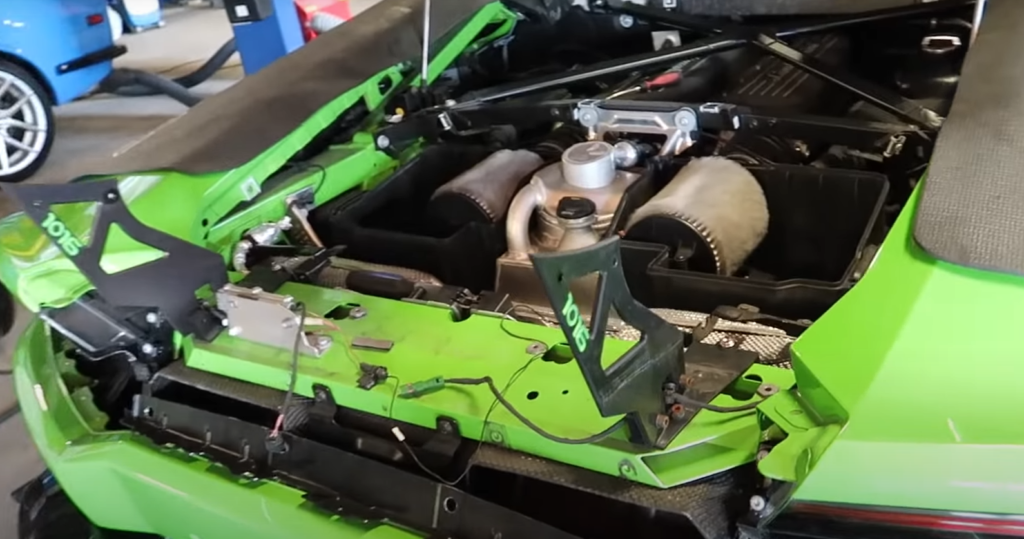
Unleashing the Roar: Exploring the Costs of Straight Piping Your Car
Considering the bold move of straight piping your car for an enhanced exhaust sound? Dive into the detailed table below to grasp the factors influencing the cost, potential expenses, and considerations involved in straight piping your vehicle.
| Aspect | Cost Range | Factors Influencing Cost | Additional Expenses | Considerations |
|---|---|---|---|---|
| 1. Exhaust System Modification | $100 – $500 | Vehicle make and model, material choice, professional installation | Welding, hangers, clamps, gaskets | Ensure compliance with local noise regulations, impact on warranty |
| 2. Professional Labor | $200 – $500 | Shop rates, complexity of the installation | N/A | Seek experienced professionals for quality work, obtain multiple quotes |
| 3. High-Performance Muffler | $50 – $200 | Brand, material, design | N/A | Consider the impact on backpressure and overall engine performance |
| 4. Custom Exhaust Tips | $20 – $100 | Material, design, size | N/A | Choose tips that complement the overall aesthetics |
Explanation of the table:
- Exhaust System Modification: Costs range from $100 to $500, influenced by factors such as the vehicle make and model, material choice, and professional installation. Additional expenses may include welding, hangers, clamps, and gaskets. Consider compliance with local noise regulations and the impact on the warranty.
- Professional Labor: Budget $200 to $500 for professional labor, taking into account shop rates and the complexity of the installation. No additional expenses are specified. Ensure quality work by seeking experienced professionals and obtaining multiple quotes.
- High-Performance Muffler: Allocate $50 to $200 for a high-performance muffler, considering factors such as brand, material, and design. No additional expenses are specified. Consider the impact on backpressure and overall engine performance.
- Custom Exhaust Tips: Plan $20 to $100 for custom exhaust tips, factoring in material, design, and size. No additional expenses are specified. Choose tips that complement the overall aesthetics of your vehicle.
FAQ
Is it worth straight-piping a car?
Straight-piping a car can be beneficial in some ways and detrimental in others. On one hand, straight piping can help increase exhaust flow and improve engine performance by reducing backpressure, leading to improved fuel economy as well as more power. However, if not done properly, it could lead to major issues such as poor idle quality, increased noise levels, decreased torque at low RPMs, increased emissions, and even damage to the catalytic converter.
Therefore it is important to understand the pros and cons of straight-piping before deciding if it is worth doing or not. If done correctly with quality parts and good tuning then it can certainly be worth doing but if not done properly then it could cause more problems than solutions.
How much HP does straight pipe add?
The amount of horsepower added by straight-piping will vary greatly depending on the car, make and model, engine type and size as well as additional modifications made. As a general rule, most cars will see an increase in power output of around 10-15 HP when fitted with a straight pipe exhaust system. However, it is important to keep in mind that these are estimates and results may vary. Therefore, it is best to test your particular setup to get more accurate numbers.
What parts do I need for a straight pipe exhaust?
To install a straight pipe exhaust system you will need:
- Cat-back exhaust kit or universal muffler delete pipes
- Exhaust clamps or hangers
- Welding supplies (if needed)
- High-temperature exhaust sealant in addition to these parts, you may also need an air/fuel ratio meter and tuning software if you plan on making any further modifications.
Is straight piping bad for your engine?
Straight-piping a car can be beneficial in some ways and detrimental in others. On one hand, straight piping can help increase exhaust flow and improve engine performance by reducing back pressure leading to improved fuel economy as well as more power. However, if not done properly it could lead to major issues such as poor idle quality, increased noise levels, decreased torque at low RPMs, increased emissions, and even damage to the catalytic converter.
Therefore it is important to understand the pros and cons of straight-piping before deciding if it is worth doing or not. If done correctly with quality parts and good tuning then it can certainly be worth doing but if not done properly then it could cause more problems than solutions.
Do straight pipes make your car louder?
Yes, straight-piping a car will typically make it louder. This is due to the decrease in backpressure which allows for more exhaust gases to be released. The increased flow results in a louder and deeper sound that many people enjoy but may not be legal in some areas. Additionally, you can expect an increase in cabin noise levels when going with straight pipes as well. For those looking to customize their vehicle’s sound without breaking the law, there are different exhaust systems available that offer various levels of sound control such as mufflers or resonators which can dampen the sound output while still keeping performance gains from the straight-pipe setup.
What would happen if I drive my car with a straight pipe?
Driving a car with a straight pipe can be dangerous and is illegal in some states, as it significantly increases the exhaust noise level. Additionally, driving with a straight pipe can damage your engine, catalytic converter, and other components due to the lack of backpressure and increased flow of exhaust gases. If you are looking to improve your vehicle’s performance without risking potential harm or breaking the law then it is best to consult an experienced mechanic who can help guide you through the process of adding a quality aftermarket exhaust system to your car.
Why do straight pipes pop?
Straight pipes are known to “pop” or produce a loud bang when the throttle is suddenly released. This happens due to backfires caused by an improperly tuned air/fuel ratio. The unburned fuel in the exhaust system is ignited by hot exhaust gases from the engine, resulting in a loud popping noise. This can be prevented by properly tuning your air/fuel ratio which will ensure that all of the fuel is being burned before exiting the exhaust system leading to smoother and quieter operation. Additionally, some aftermarket straight-pipe setups come with built-in resonators which help muffle any popping sounds.
What makes turbos pop?
Turbos can produce a popping sound when the throttle is suddenly released due to backfires caused by an improper air/fuel ratio. This happens when unburned fuel in the exhaust system is ignited by hot exhaust gases from the turbocharger, resulting in a loud popping noise. To eliminate this, it’s important to ensure that your engine is properly tuned for the turbocharger and that your air/fuel ratio is set correctly. Additionally, some aftermarket turbo setups come with built-in mufflers which help muffle any popping sounds.
What are the pros and cons of straight piping?
The pros of straight-piping include increased horsepower and torque gains due to reduced backpressure, improved fuel economy, and a more aggressive sound. The cons of straight-piping include increased engine noise levels (both inside and outside the car), lack of emission control, greater risk of damage to other components such as the catalytic converter, and potential legal issues due to increased noise level. Additionally, straight-piping is not for everyone since it requires careful tuning and quality parts to get the most out of your setup. It is important to consider all of these factors before deciding if this modification is right for you.
Why do race cars backfire?
Race cars backfire due to an improper air/fuel ratio, which causes unburned fuel to exit the exhaust system and be ignited by hot exhaust gases from the engine. Additionally, some race car drivers may intentionally cause their cars to backfire for dramatic effect or as a way of signaling other drivers. To prevent this, it’s important to ensure that your engine is properly tuned and your air/fuel ratio is set correctly. Additionally, some aftermarket setups come with built-in mufflers which help muffle any popping sounds. This can help reduce the chances of backfiring while still allowing for increased performance gains from the setup.
Why do you delete a muffler?
The reason for deleting a muffler is to reduce back pressure and increase exhaust flow, resulting in improved engine performance. Additionally, deleting the muffler can give your car a more aggressive sound along with increased horsepower and torque gains. However, there are some downsides to removing the muffler as it will increase engine noise both inside and outside of the car, which can lead to potential legal issues due to excessive noise levels. If you choose to delete your muffler then you must have an experienced mechanic properly tune your vehicle for optimal performance while still maintaining safe noise levels.
Does the muffler delete hurt cars?
While a muffler delete may improve engine performance, it can also be potentially damaging to your car. The increased exhaust flow and higher noise levels can put additional strain on the engine and other components like the catalytic converter which could lead to premature failure or decreased performance over time. Additionally, the increased noise levels from deleting the muffler can lead to potential legal issues due to excessive noise levels so it’s important to check with local laws before making this modification. It is important to properly tune your vehicle for optimal performance while still maintaining safe noise levels if you choose to delete your muffler. This will ensure that you get the most out of your setup without causing any damage to your car.
How much does it typically cost to straight pipe a car?
The cost of straight-piping a car can vary based on factors such as the make and model of the vehicle, the type of exhaust system, and the labor rates in your location. On average, expect to pay anywhere from a few hundred to over a thousand dollars for a professional straight pipe installation.
Can I straight pipe my car myself to save money?
Straight piping a car requires technical expertise and specific tools. While some enthusiasts may attempt a DIY approach, it is recommended to seek professional help for exhaust modifications to ensure proper installation, optimal performance, and compliance with local regulations. DIY attempts may result in additional costs for corrections.
Do different vehicles have different costs for straight piping?
Yes, the cost of straight-piping a car can vary based on factors such as the complexity of the exhaust system, the materials used, and the difficulty of the installation. High-performance or luxury vehicles may incur higher costs due to the need for precision and specialized expertise during the modification process.
Are there additional costs associated with straight piping, such as materials or maintenance?
In addition to the installation cost, you may need to consider the price of the straight pipe itself, any necessary adapters, and potential modifications to other components of the exhaust system. Regular maintenance and inspections may also be required to ensure the straight-piped exhaust functions properly over time.
Are there any legal considerations or potential fines related to straight piping a car?
It’s crucial to be aware of local regulations regarding vehicle modifications, as straight piping may not be legal in some areas. Violating these regulations could lead to fines or penalties. Before proceeding with a straight pipe installation, check with local authorities to ensure compliance with noise and emissions standards.
Can straight piping impact my car’s performance or fuel efficiency?
While straight piping may increase exhaust flow and alter the sound of the vehicle, its impact on performance and fuel efficiency can vary. In some cases, it may lead to a marginal increase in horsepower, but the effect on overall performance depends on various factors, including the specific characteristics of the vehicle and its engine.
Useful Video: How Much Does it Cost to Straight Pipe a Car (Straight Pipe Exhaust Pros & Con.
Conclusion
To straight-pipe, a car’s exhaust system is a popular modification amongst car enthusiasts. It has its benefits, such as increased horsepower and improved sound, but it also comes with some drawbacks like reduced fuel economy and increased emissions output. Ultimately, it’s up to the driver to decide whether or not this modification is right for them and their vehicle. If done correctly, straight piping can be a great way to maximize performance without compromising safety or legality. However, if done improperly or too aggressively, it could have serious consequences that negatively affect your vehicle’s health and performance. Be sure to do your research and consult an expert before making any modifications to your car’s exhaust system.
References
- https://www.pipsisland.com/how-much-does-it-cost-to-straight-pipe-a-car/
- https://vehiclefreak.com/straight-pipe-exhaust-cost-benefits-how-much-does-it-cost/
- https://www.autocornerd.com/does-straight-piping-increase-mpg/
- https://www.pipsisland.com/how-do-you-straight-pipe-your-car/





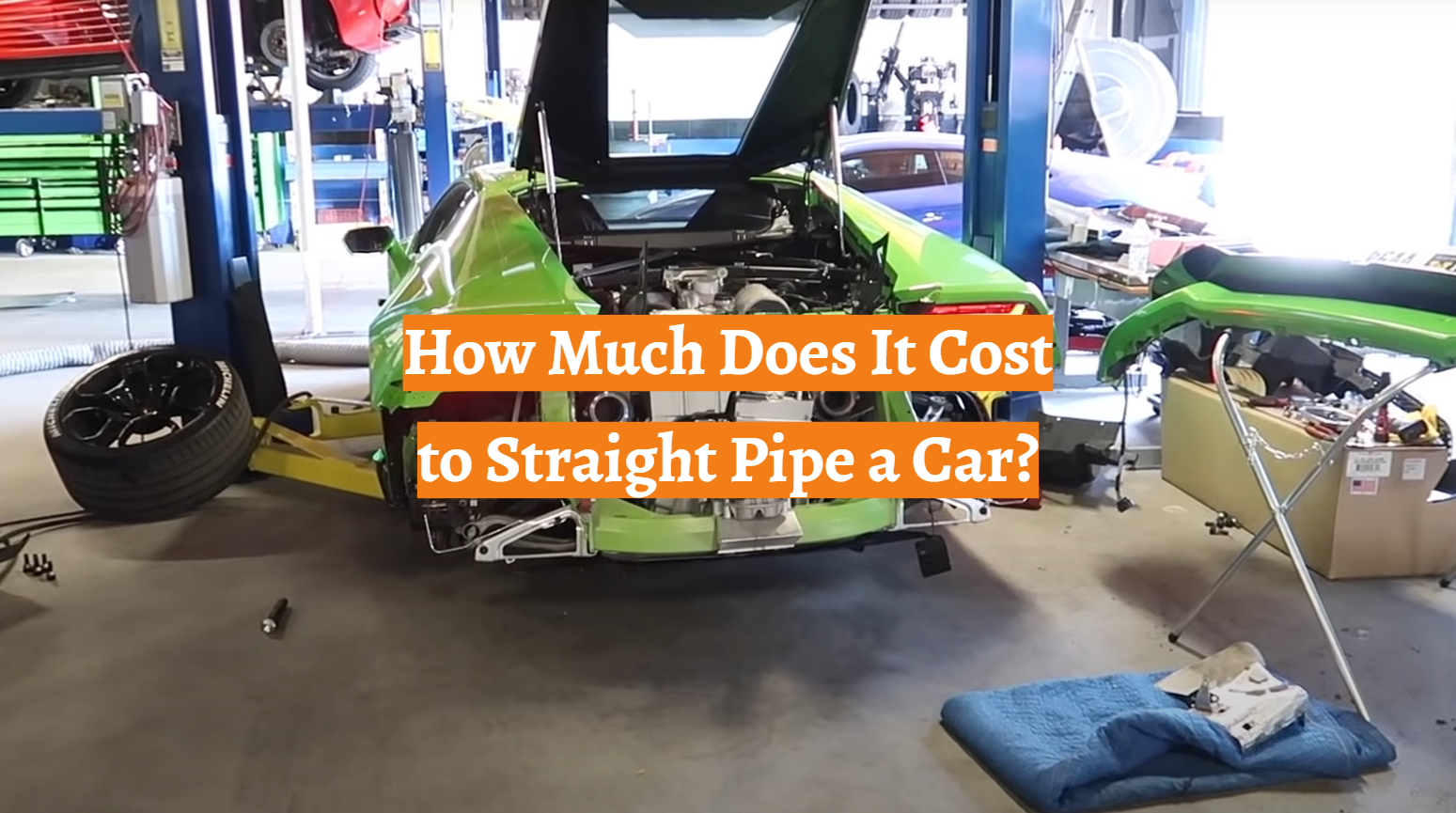
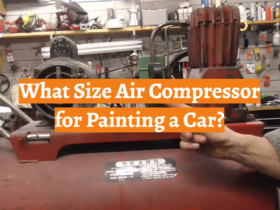



Leave a Review